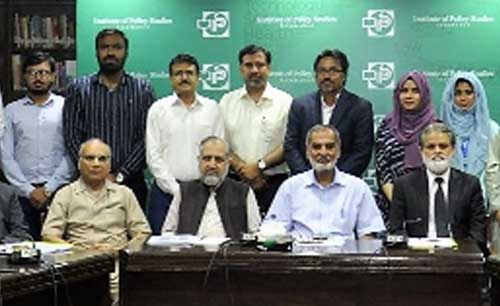World freedom order within which the European project was established and is embedded, is fraying. This trend has been building up for more than a decade now. As Paul B. Stares argues, the world may have been living through a transitional period akin to those of 1913?20, 1938?47, and 1988?94. The novel coronavirus has exacerbated, accelerated, and increased everything from protectionism and great power rivalry to nationalism and ideological competition. As a result, the pandemic may represent the tipping point from the international liberal order to disorder. This reality should encourage Europeans to realize that rules-based multilateralism is not simply nice to have but essential, especially if they are to maintain their way of life in the years to come. No longer simply driven by the ideal of peace on the continent and the benefits of the single market, today the rationale for the European project is global. Nationalism driven by nostalgia, the closure of borders, and racism being undermined by the creeping realization that size and clout matter more than ever. Only together can Europeans negotiate with China, stand up to Ukraine issue, rebuild bridges across the Atlantic, address global pandemics, govern migration, combat climate change, and embrace artificial intelligence and biotechnology while ensuring digital safety. Europeans have precious few alternatives to sticking together if they want a fair chance of thriving in the twenty-first century, the post-World War II liberal international order has certainly ended. The so-called liberal international order rose from the ashes of two world wars. With it came the emergence and consolidation of the United Nations, the proliferation of international organizations, the slow but steady affirmation of international law, and the mushrooming of regional cooperation and integration initiatives, of which the European Union has been the most successful example. It first crystallized in the West during the Cold War and was extended after the fall of the Iron Curtain and the collapse of the Soviet Union. It was an order some reviled and others embraced. Some mourn, others applaud, and others are not yet willing to accept the end of the liberal international order.
However, few if any would dispute that the distribution of power within the international system is changing dramatically. The distribution of power is complicated. Its complexity is derived from concomitant trends: a traditional shift of power away from a global hegemon the United States toward multiple power centers and a diffusion of power, driven first by globalization and now by the fourth industrial revolution.
Power is not shifting simply from the West to the East but also beyond state bound-aries, flowing across air, land, sea, space, and cyberspace. The international order or disorder that follows will be non-liberal; shaped by liberal democracies and illiberal or authoritarian states, it will likely feature structured global cooperation on some issues like climate change, and transactional or ad hoc approaches to other issues like digital governance.
Proponents of realism are quick to point out that, in a sinister repetition of history, the world, and in particular the United States and China, are sleepwalking into a Thucydides’s trap the theory that all rising powers inevitably clash with the predominant powers. Although falling into the trap has never been preordained, the structural underpinnings of the power shift, coupled with misperception and miscommunication, have created potent drivers for conflict. This is not to say that history will repeat itself. However, the competition between the United States and China has morphed from commercial to technological rivalry and, during the COVID-19 crisis, has acquired ideological undertones. This competition could, inturn, result in a twenty-first century military confrontation.
Liberal observers would be hard pressed to reach a fundamentally different conclusion as international institutions, rules, and regimes have been hollowed out and marginalized, or have collapsed outright. These weak or effectively moribund international institutions are no longer capable of creating a controlled setting for the peaceful management of conflict. Russia’s violation of the Intermediate Range Nuclear Forces Treaty, which the United States met by withdrawing from the agreement, underscores both the fragility of institutional arrangements and how their unraveling heightens the risk of devastatingly violent conflict. Given that the United States is no longer willing and able to sustain an international order larger than itself and no other global actor is in a position to fully step into the void, the multilateral rules-based order is at risk. Multipolarity could eventually lead to strengthened multilateralism. But, in the slow and convulsed process of transition from a unipolar to a multi-, inter-, or nonpolar system, multilateralism is taking a hard hit, and, with it, the potential for the peaceful management of international relations has been reduced dramatically. Constructivists, arguing that history is shaped not merely by objective, material forces, but by inter-subjectively defined identities and interests, are pessimistic as well. Because identities are constructed in mutually exclusive ways, the potential for violent conflict escalates. Whether one pits the West against Islam, liberal democracies against authoritarianism, cosmopolitans against nativists, or elites against the people, twenty-first-century constructs of identity have set the scene for violent conflict.
Some features of a twenty-first-century global confrontation can be discerned. From the Middle East to eastern Europe and from the Balkans to the Korean Peninsula, great power rivalry interlocks with and exacerbates regional power struggles, state fragility, and violent conflict. Other features, though arguably far more consequential, notably the links between economic and technological rivalry and the risk of military confrontation; the trade-offs between public health, political rights, and economic development; or the nexus between climate change and mass displacement will be more difficult to predict.
In this changing international environment, the EU has been imbued with a new sense of responsibility to sustain a rules-based multilateralism. Doing so requires both hard work and imagination. Part of the approach covers well-trodden ground. The EU should invest more in the UN system, both politically and financially, and spur reform of the WTO, notably its dispute settlement system, and of other international financial institutions to make them more representative and legitimate. The EU should also defend and implement international agreements and law, particularly by supporting the Joint Comprehensive Plan of Action with Iran. It should support forms of regional cooperation in Africa, Asia, and Latin America, which are the building blocks of global governance. It should also better coordinate internally, both between member states and across institutions and policy fields. However, these actions will be insufficient on their own. The EU should also support multilateralism in at least three ways. First, it should systematically transform its bilateral or interregional arrangements into multilateral agreements. This means bringing the multilateral agenda forward in all of its bilateral and regional relationships, as well as making multilateral cooperation more central to EU activities, particularly in promoting sustainable development. For example, in order to better address youth and migration issues, the EU is already working to expand its bilateral relationship with the African Union into a trilateral partnership with the United Nations. Similarly, the EU could leverage its trade policy, which includes its relationships with Canada (through the Comprehensive and Economic Trade Agreement), Japan, members of Mercosur, Mexico, and others, to create a coalition to reform the stalled WTO.
Second, European foreign policy should acknowledge that a fixed set of like-minded countries to which it can automatically and lazily turn no longer exists. From like-minded partnerships, the EU should shift to like-minded partnering, in which the EU, guided by its principled goals, pragmatically identifies and fosters the appropriate multilateral group of actors on any given geographical or thematic issue. The constellation of actors will invariably change from issue to issue and, occasionally, within the same issue area as time (and governments) go by. The group of partners on the Iranian nuclear deal is not the same as for the conflict in Ukraine. The multilateral coalition in favor of a progressive climate agreement in Paris in 2015 was not the same as for a more ambitious outcome in Madrid four years later. Looking ahead, it remains to be seen whether the Group of Twenty (G20), which played a key role in the 2007?08 global financial crisis, will rise to the challenge of spurring post-COVID-19 economic recovery, or whether other multilateral formats will emerge instead.
Third, given the accelerated speed of politics in the digital age and the highly fluid nature of geopolitics, the EU should blend flexibility and inclusivity in its pursuit of effective multilateralism. This suggests the need for more frequent minilateral forums and contact groups to deliver multilateral results. The EU three (France, Germany, and Italy) format on the Iranian nuclear file and the International Contact Group on Venezuela are two examples. These are characterized by both an internal EU contact group (a subset of member states) and an international group of which the EU is a part. Such groups should be small enough to be agile and responsive but also large and varied enough to be representative. At the same time, to be legitimate, they should establish an institutional link to the larger multilateral setting, including both in internal EU features as well as in the international system.
Future international order could feature more challenges to norms and be less stable than the current international order. Yet it could also be more inclusive, more flexible, and ultimately more resilient. The liberal international order may not survive, but what follows is not predetermined, it does not have to mean the end of the open, liberal values at the core of the European project. To maintain these values, Europeans and others should invest much more in multilateralism and, above all, be willing to break and recast the comfortable mold created in the recent past.
International order and EU




